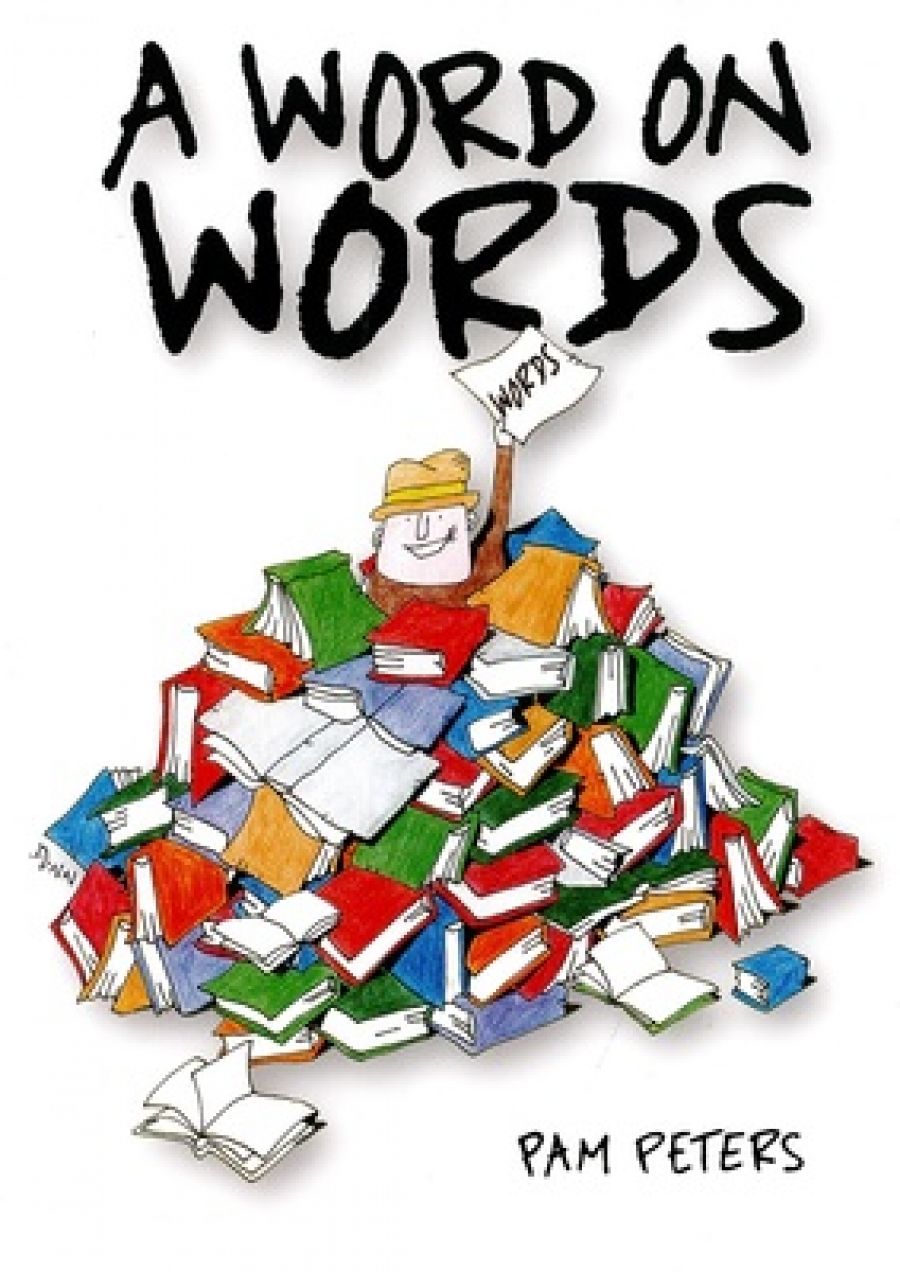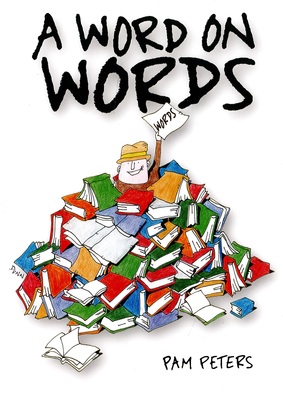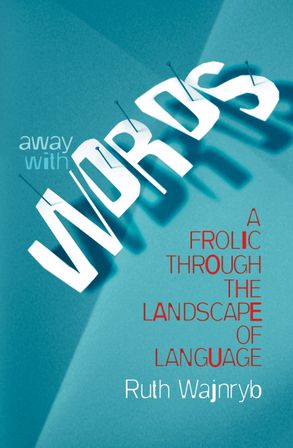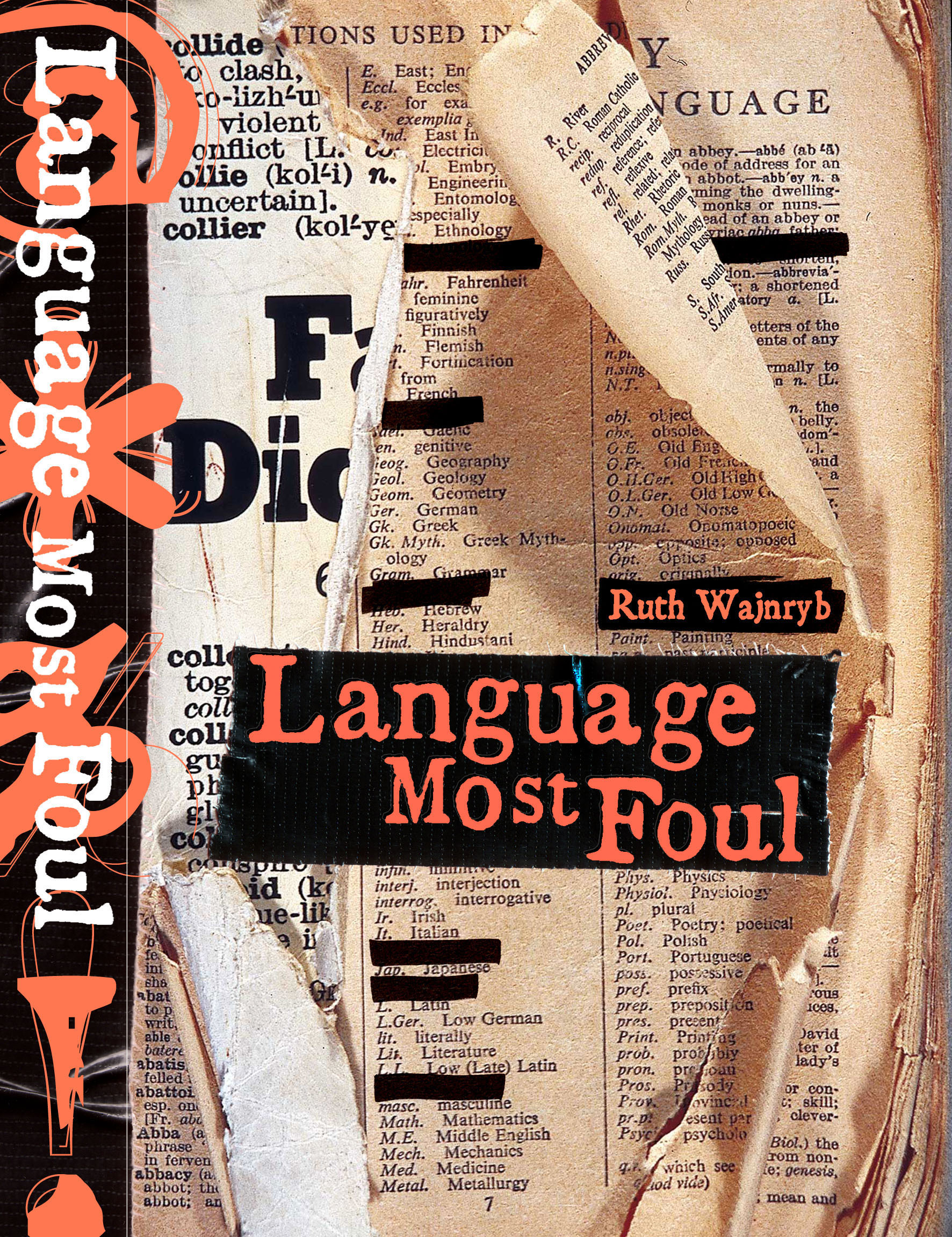
- Free Article: No
- Contents Category: Language
- Review Article: Yes
- Article Title: Wash your mouth out!
- Online Only: No
- Custom Highlight Text:
Books on language have been immensely popular in recent years. Simon Winchester’s The Surgeon of Crowthorne (1999) was a study of the relationship between James Murray, the editor of the Oxford English Dictionary, and the insane citation collector Dr Minor. Winchester followed this with The Meaning of Everything (2003), a history of the Oxford English Dictionary project. In Australia, the reception of Don Watson’s Death Sentence: The Decay of Public Language (2003) and of Watson’s Dictionary of Weasel Words (2004) demonstrated the general reading public’s interest in language matters.
- Book 1 Title: A Word On Words
- Book 1 Biblio: CAE Press, $19.80 pb, 90 pp
- Book 1 Cover Small (400 x 600):

- Book 1 Cover (800 x 1200):

- Book 2 Title: Away With Words
- Book 2 Subtitle: A frolic through the landscape of language
- Book 2 Biblio: ABC Books, $27.95 pb, 328 pp
- Book 2 Cover Small (400 x 600):

- Book 2 Cover (800 x 1200):

- Book 3 Title: Language Most Foul
- Book 3 Biblio: Allen & Unwin, $29.95 hb, 230 pp
- Book 3 Cover Small (400 x 600):

- Book 3 Cover (800 x 1200):

Some recent additions are Ruth Wajnryb’s Language Most Foul (2004) and Away with Words (2005), and Pam Peters’s A Word on Words (2005). The latter brings together a series of essays that were originally published in a regular column in the journal Australian Language Matters between 1994 and 2003. The essays have been grouped thematically in chapters such as ‘Expanding the Lexicon’, ‘Language and Technology’, ‘Grammar and Word Forms’ and ‘Language and Culture’. It is inevitable that some of the essays should canvass material that is examined in Peters’s Cambridge Guide to English Usage (2004), but the informal context of the journal column allows for a more discursive and conversational style. On spelling, Peters confirms that jail is now preferred over gaol in Australia, and that, in spite of pressure from scientific groups, there is little evidence of sulfur replacing sulphur. I was surprised that Peters argues that the choice between foetus and fetus is ‘not clear-cut’. She points to an Australian database from the 1980s where the two spellings ‘were about equally represented’. The Australian National Dictionary Centre’s Corpus of Australian English shows that foetus is overwhelmingly preferred in Australia, and this is also the message of Web evidence. In her discussion of e-mail and email, Peters points to the interesting fact that while it seemed the word was following the expected track of losing the hyphen, the appearance of terms such as e-book and e-tail (which look very odd without the hyphens) may produce a reversal to e-mail.
Ruth Wajnryb’s Language Most Foul is a book about swearing, prompted by the fact that, although this is a topic that fascinates the general public, it has not been subjected to serious academic investigation. This is largely true, although on the fringes of academia is the American journal Maledicta, produced by Reinhold Aman. This journal is not mentioned in Language Most Foul, but Maledicta and its offshoot publications are important sources for studies of swearing – see www.sonic.net/maledicta/.
Wajnryb examines the three reasons why people swear. The first is catharsis, as when you stub your toe. This involves an outpouring of expletives, and is unusual among swearing rituals in that it does not require an audience. The second reason for swearing is abuse, and this time the ritual needs an audience, whether present or implied – the outpouring of expletives is directed at a target. These first two reasons for swearing are obviously related, but the third category, ‘social’ swearing, is very different: ‘in relaxed settings, where people are comfortable with the other in-group members, their language is characterised by a high degree of swearing.’ Thus, you might welcome a friend you have not seen for some time as ‘You old bastard’. Friendly gratitude might be expressed as ‘Fuck, you sure have brought a lot of beer!’ and a welcome might take the form of ‘Put your shit over there and come and have a drink’. Social swearing produces compounding of swear words, as in ‘bloody beauty’ or ‘fuckin’ fantastic’, and intensifying infixes as in ‘absobloodylutely’ and ‘infuckingcredible’.
Wajnryb’s core ‘dirty dozen’ words are fuck, cunt, shit, piss, bugger, bloody and arse (along with the slightly less foul damn, hell, fart, crap and dick). These terms all fit into the generally recognised taboo areas of religion (dominant in the nineteenth century) and sex and bodily functions (dominant in the twentieth century).
The religious taboo (at core arising from the imperative in many religions that god must not be named) has clearly weakened in the Western world, but Wajnryb provides a very detailed account of its history. The taboo on sex and bodily functions has weakened to some extent, but in some contexts it remains strong. Wajnryb points out that Microsoft’s spellchecker refuses to give fucking and provides unhelpful options such as ‘tucking, ducking, bucking, funking, tuckering, fluking’. Not surprisingly, cunt is also on Microsoft’s list of ‘wash your mouth out with virtual soap’, but it remains a surprise that piss, shit and fart are also proscribed. Fuck did not find its way into the Oxford English Dictionary until the 1970s, and in all surveys of taboo words it remains in the top two, along with cunt. Nevertheless, Wajnryb provides a fascinating argument about the very different paths these two words are taking. Fuck is by far the more common word in speech, and it has spread over many grammatical categories. It can be a verb, a noun, a gerund, an intensifying adjective, an adverb and an exclamation, and it appears in numerous phrases and compounds. Ironically, it has been its very ‘morphological flexibility’, its linguistic promiscuity, that has led to a loss of its referential meaning, and therefore a weakening of its power to shock. By the time we get to ‘Where the fuck are we?’ or ‘How the fuck did you manage that?’, the sexual reference is entirely emasculated. Cunt, however, has not taken this path of morphological flexibility. It has not moved into the verb category, and while in phrases such as ‘a cunt of a (day etc.)’ it is edging towards adjectival status, it has not made the final leap. By limiting itself to its function as a noun, Wajnryb argues, cunt has retained its referential meaning and therefore its power to shock.
It is not until the epilogue that Wajnryb squarely faces the issue that there has recently been a shift in the taboo areas associated with swearing; I was disappointed that this was not taken up earlier in the book. Wajnryb points out that when the Afrikaans-speaking coach of the Springbok team used the phrase ‘fokken kaffirs’, and when an Australian test cricketer used the phrase ‘black cunt’, the primary offence was not in the sexual taboo words but in the racial slurs. Race is now a primary taboo area, although Wajnryb is right to note that this new taboo has a wider net: ‘personal vilification of the “-ist” kind – especially relating to race, ethnicity, religious affiliation, sex and sexual orientation, and able-ism.’ Of these, at the moment, race has the most highly charged taboo loading, but in the present world political situation it will be interesting to see what happens to terms relating to religious affiliation.
Away with Words is a series of two- to three-page essays on a variety of language subjects, grouped into ten thematic topics. Section 1, for example, deals with pronouns; section 4 with political language; section 7 with ‘text-types’ (menus, SMS text messages, obituaries and the like); and section 9 with word histories.
‘Pronouns’ may sound ominously dull as a topic for ‘a frolic through the landscape of language’, but Wajnryb brings them to life with accessible prose and deft comic touches. She confesses that against all her finer and better instincts the ‘royal we’ of the Queen’s Christmas message has its ‘subliminal’ effect: ‘Without knowing why, we feel warm, gooey, Kamahl-like. It’s the pronominal counterpart to “Kumbaya”.’ I’m drawn to ‘Kamahl-like’; it deserves to be a stayer. She defends ‘youse’ against the prescriptivist outraging of sectarian and class biases, and continues an anti-monarchist subtext: ‘We could still keep “you” for the dog and the Queen ... but adopt “youse” for the friendly, plural context, say, when the whole House of Windsor plus corgis drop over for pizza.’ While sitting in the kitchen, writing on her laptop and waiting for the ‘Bing Lee’ men to deliver a new fridge, Wajnryb ponders the use of ‘she’ for inanimate objects such as machines, cars and boats. Is it a male control thing? In support of this she notes that the ‘she’ would not be used of a public transport vehicle – ‘no one would say: “Take the 378. She goes along Oxford Street.”’ The delivery men arrive with the new fridge: ‘“So where do you want her?” they ask, manoeuvering their way into my kitchen.’
One of the strengths of the book is the way such personal anecdotes give rise to, or are interwoven with, the linguistic commentary. In a ladies’ toilet in an office block, above the cistern, she notes the sign, ‘There’s a toilet brush next to the bowl in case it is needed’, and this prompts a discussion of the disingenuous avoidance here of the pronoun ‘you’ (whose presence might have suggested that you were just the kind of person to dirty the bowl), especially through the use of ‘existential “there”’ and the passive. Similarly, a frozen screen on the PC generates the message ‘This program has performed an illegal operation’. Why are such computer messages so menacing? An e-mail problem produces a comparably frightening message: ‘This message was undeliverable. The address has permanent fatal errors.’ Wajnryb laments: ‘It’s never “temporary” and “treatable”. Forget clemency. There is none. No one speaks to me like this. Not the bank manager. Not the Tax Office. Not my periodontist. Not my ex. Not even my personal trainer.’ Stuck at the traffic lights behind a tradesman’s van that displays as part of its advertising signage the line ‘I fix leaking showers without disturb tiles’, Wajnryb considers all the unlikely steps she might take to correct this bad grammar (such as ‘ring him up and ask him, nicely, whether he knows or cares that his van displays bad grammar’), while the ‘leaky sentence seems to mock her, as if to say “Get a life!”’. But even as the traffic lights change, the linguist’s inquisitive mind will not stand still – should it be ‘leaking showers’ or ‘leaky showers’? And is there a difference? I must say that I had my own prescriptivist moments when on page 183 the possibility of Bill Clinton being offered the chancellorship of Oxford College is canvassed (‘First hurdle: matters of his reputation for sexual promiscuity will be publically [sic] raked over’), and on page 172 where we are told ‘Arnott’s tuned “gaiety” into a chocolate biscuit’.
Wajnryb has a penchant for asking difficult and often quirky questions that lead to insights about the way our world is linguistically structured. Why are advertisers trying to turn the eminently sensible plural ‘pants’ into the singular ‘pant’? Why do newspapers talk of Osama bin Laden on a first-name basis: ‘Get Osama!’? (Did we ever say ‘Get Adolf’?) Why do we use the indefinite article for ‘a cold’ but the definite article for ‘the flu’? Are gerunds, sitting uneasily between the grammatical categories of noun and verb, a challenge to the binary structure of our world – and therefore a bit like bisexuals? Why do we have the verb ‘to lie’ but no corresponding verb ‘to true’? This is certainly a book for word lovers.


Comments powered by CComment